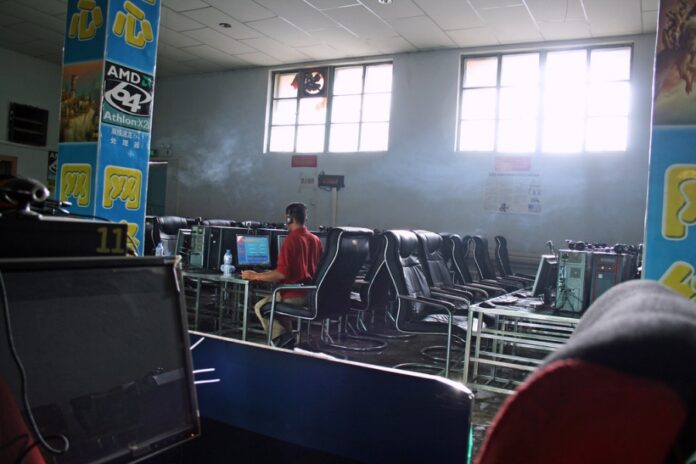Advancements in video games are (rightfully) leading to an increased concern about gaming addiction — and China is bad at fighting it
There will soon be more PC gamers in China than the total U.S. population. The statistic alone is mind-boggling, but is even more perplexing when put in context. The massive number of PC gamers comes as a result of China’s attempt to combat gaming addiction by banning video game consoles from the country from 2000 to 2015.
This ban was just one part of China’s ongoing actions to curtail gaming addiction. In 2018, China halted all approvals on new video games as they transitioned approval responsibilities to the State. And last month, the country banned blood, corpses and gambling (among others) from games sold in China.
Recently, China has implemented a new strategy: video game rehabilitation centers that look more like military prisons than anything else, with barred windows and rigorous training regimes to keep “patients” active. China’s efforts to combat video game addiction even lead one mother to say this about her child: “I tried everything, but nothing helped. Therefore we had to drug him with sleeping pills to bring him here.” Another father hired a digital hitman to “kill” his son repeatedly in the gaming world so that he would get a job. The issue has become so large in China that many have deemed digital media consumption and video games as “electronic heroin.”
The fundamental issue of video game addiction is that many developers are actively making games harder to put down. The reality of the situation is that the best outcome for video game developers is to keep you playing and paying for their games for as long as possible. That’s why many of the largest game developers actively seek out psychology consultants to give players an “itch” to keep playing again and again. Some of the biggest games on the market — “Fortnite,” for example — are made with such a compelling and inviting gameplay loop that they create a new kind of addictive rush in games. The feeling you have when you finally get your first “Victory Royale” is unmatched.
But are these games inherently bad because they are hard to put down? After all, it’s in the game designers’ best interest to give players a product that they can get the most enjoyment out of for long periods of time. And gamers are asking for just that. So where is the line?
I often tout my favorite games as those that give me that “just one more round” feeling, and I’m sure we’ve all had those moments where we lose track of time in a game, television show or social media and we suddenly realize that our day is slipping through our grasp. It happens to me far too often. But when you take a step back and realize that, in a different context, that same feeling could be applied to another drink or another round at the casino, it’s easy to understand how gaming addiction could occur. I don’t know what I would do without games, but, at the same time, I’ve also been able to go months without playing them.
The problem of real video game addiction is that it results in significant impairment to important areas of daily life. There is no magic number for the amount of hours it takes for gaming to be classified as a disorder — it boils down to the impact the behavior has on your life. This may not be substance abuse like drug addictions in the traditional sense, but it is a serious non-substance addiction nonetheless — in the same category as food and gambling addictions, according to the World Health Organization, to be made official in 2020.
So what is the best way to combat video game addiction? Is it just as simple as catching it early? When Prince Harry complained about the addictiveness of social media and video games earlier this year — and called for them to be banned — my immediate reaction was just to blame poor parenting. I mean, come on: steal the power cord, block the device from wifi, just do something. Don’t sit there with your arms in the air — be a parent. But while I still think this method will solve most issues related to time spent on video games, actual cases of disorder can alter behavior and make it incredibly difficult.
Developers have already started to provide solutions to video game addiction. Plenty of games and systems encourage breaks and activity outside of gaming. “Pokémon Go” encourages gamers to hatch Pokémon eggs by walking more, meet new people at a local park by joining a raid and even build communities around catching the rarest of them all. Nintendo has historically been a proponent of encouraging activity. We’ve all dealt with the Netflix equivalent of “Are you still watching?” every time the Wii used to remind gamers to go outside. Even one of the best-selling games of all time, “Wii Sports,” encouraged engaging in physical activity, which was then followed up with hits like “Wii Fit” and “Wii Sports Resort.” The marketing of those games was quite brilliant –– they were aimed toward parents worried about the health of their children.
The video game industry relies on games that keep players coming back for more. That’s how the money is made. But caught up in the race-for-profitability are those who deal with the damaging consequences of digital addiction. We have to find a better way to break stereotypes of gaming addiction and help those who are actually dealing with a harmful gaming disorder.
Written by: Calvin Coffee –– cscoffee@ucdavis.edu
Disclaimer: The views and opinions expressed by individual columnists belong to the columnists alone and do not necessarily indicate the views and opinions held by The California Aggie.





